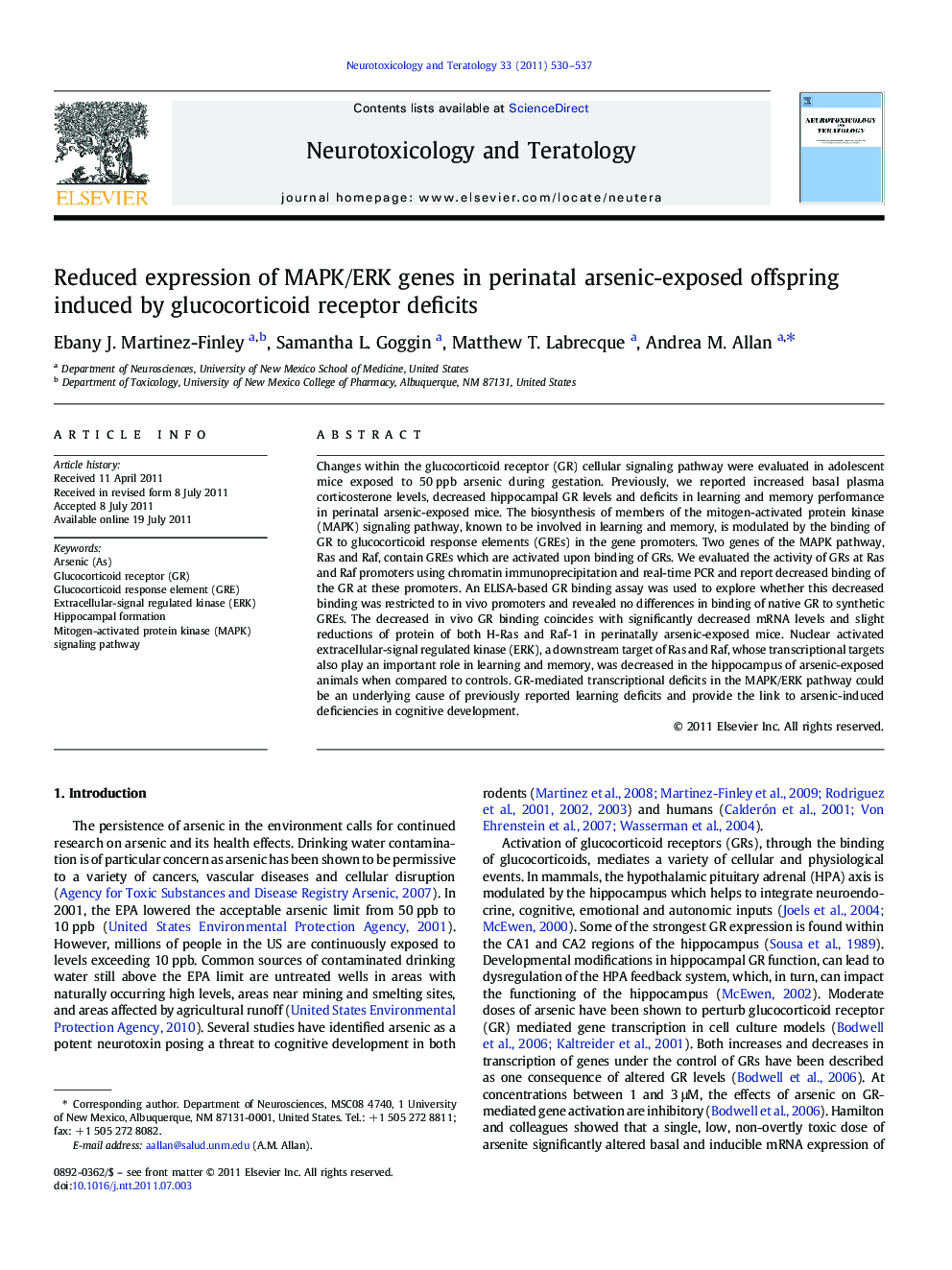| کد مقاله | کد نشریه | سال انتشار | مقاله انگلیسی | نسخه تمام متن |
|---|---|---|---|---|
| 2591530 | 1131814 | 2011 | 8 صفحه PDF | دانلود رایگان |

Changes within the glucocorticoid receptor (GR) cellular signaling pathway were evaluated in adolescent mice exposed to 50 ppb arsenic during gestation. Previously, we reported increased basal plasma corticosterone levels, decreased hippocampal GR levels and deficits in learning and memory performance in perinatal arsenic-exposed mice. The biosynthesis of members of the mitogen-activated protein kinase (MAPK) signaling pathway, known to be involved in learning and memory, is modulated by the binding of GR to glucocorticoid response elements (GREs) in the gene promoters. Two genes of the MAPK pathway, Ras and Raf, contain GREs which are activated upon binding of GRs. We evaluated the activity of GRs at Ras and Raf promoters using chromatin immunoprecipitation and real-time PCR and report decreased binding of the GR at these promoters. An ELISA-based GR binding assay was used to explore whether this decreased binding was restricted to in vivo promoters and revealed no differences in binding of native GR to synthetic GREs. The decreased in vivo GR binding coincides with significantly decreased mRNA levels and slight reductions of protein of both H-Ras and Raf-1 in perinatally arsenic-exposed mice. Nuclear activated extracellular-signal regulated kinase (ERK), a downstream target of Ras and Raf, whose transcriptional targets also play an important role in learning and memory, was decreased in the hippocampus of arsenic-exposed animals when compared to controls. GR-mediated transcriptional deficits in the MAPK/ERK pathway could be an underlying cause of previously reported learning deficits and provide the link to arsenic-induced deficiencies in cognitive development.
► The GR signaling pathway was evaluated in perinatal arsenic exposed mice.
► Levels of p-ERK, Ras and Raf, were reduced in arsenic perinatal exposed mice.
► Decrease levels of Ras and Raf promoters was seen in the perinatal arsenic mice.
► GR was able to bind to synthetic GRE sequences.
► Transcriptional deficits could be related to arsenic-induced learning deficits.
Journal: Neurotoxicology and Teratology - Volume 33, Issue 5, September–October 2011, Pages 530–537